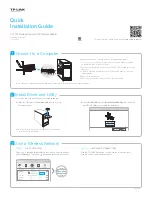
RLX-FHE, RLX-FHES, RLX-FHS
♦
RadioLinx FH
Reference
Frequency-Hopping Industrial Radio
Page 114 of 151
ProSoft Technology, Inc.
November 25, 2008
Use this radio as a Repeater:
If this box is checked, the radio will be act as
a Repeater. If it is unchecked it will not.
Allow radio to Roam:
Allows the radio to search the network for the next
available radio to send the information packet to.
Collision Handling:
Select (check) this checkbox to turn on collision
handling. All radios in the network should be set the same, either on or off.
Collision Handling is not necessary for:
o
A single point to point device network
o
A single master slave device network
o
Any other situation where normally only one device is transmitting at a
time
Collision Handling may be necessary if:
o
Multiple independent device networks are connected to a single radio
network
o
The devices use a peer-to-peer asynchronous protocol
o
Any other situation where multiple devices are regularly transmitting
simultaneously
15.1.7 Radio Configuration Dialog Box - DF1 Half Duplex
The Radio Configuration Dialog Box opens when you select a radio in the
Graphical Layout Screen (page 106), and then choose Properties. Use this
dialog box to view or modify the settings for a radio.
Radio Name:
Identifies the radio in the Graphical Layout Screen. Type the
name (for example, Scanner, Radio 1, or Repeater) of the radio in this field.
Last Date Configured:
The date and time reported here indicates:
o
The last time that the configuration parameters were modified and saved
The last time the radio was configured (page 71) (configuration data was
downloaded to the radio).
Last S/N Configured:
This is the serial number of the radio being configured.
The information in this field is maintained by ControlScape and cannot be
modified. If this radio has never been configured as a part of this network, this
field will be blank.
Associate Device ID:
In this type of protocol network, remote devices
connected to the network must be "associated" with the particular radio they
are connected to. Use this button to set the unique device ID (page 118)
number(s) connected to this radio.
Master:
Select (check) this checkbox if this radio is a DF1 Master.
Baud Rate:
Select the baud rate from the dropdown list. The baud rate on
the radio must match the baud rate on the connected serial device.
Parity:
Select the parity (None, Even or Odd) from the dropdown list. The
parity on the radio must match the parity on the connected serial device.
Data Bits:
Select the number of data bits (7 or 8) from the dropdown list. The
data bits on the radio must match the data bits on the connected serial
device.
Stop Bits:
Select the number of stop bits (1 or 2) from the dropdown list. The
stop bits on the radio must match the stop bits on the connected serial
device.
Summary of Contents for RadioLinx FH Series
Page 6: ......
















































